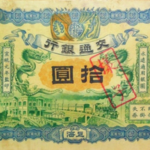2018 – the black swan could be China
| 21-12-2017 | Rob Beemster |

Chinese gross domestic product (GDP) is forecasted to end 2017 at around $12 trillion, while the total debt to GDP is about 400%. The economic growth has been impressive as well is its nominal (but also relative) rise of the total debt.
The Chinese economy has grown from the start of its GATT membership in 1995 from around $750 bio to $12trl now. However, total credit grew much more, from around 100% of GDP in 2000 to more than 400% of GDP now.
Credit growth is still surging. This is one reason why the Chinese want their economy to expand at a speed of more than 10%. They need to hold this pattern for some years to come. When the Chinese government is able to put a brake on the growth of credit, GDP is allowed to decrease speed. We see comments from those in power about their wish to slow credit growth. But doing this is like changing the course of a tanker in a canal. In other words.
If Chinese GDP growth would decrease, and credit growth continues to surge, then a big disaster is to happen. The huge mountains of debt have to be financed, when this gets tougher, one can imagine that it will result in a Chinese economic slowdown.
If the credit bubble bursts, it will result in a devaluation of the yuan. This will have effect on the whole world economy. During the Asian crisis in 1997, China was a tiny economy, now it is huge. So not only mature economies like the ones of America and Europe will feel the pain but the surrounding countries and Africa will suffer heavily.
The outcome for the dollar overall, is fairly vague to me. Some economists see a Chinese devaluation as highly deflationary for the global economy and therefor a dollar bullish event. I have got doubts to the last part of that view. China has got an enormous stock of dollar bonds. It would not surprise me if they start selling these during an economic crisis.
If you are a corporation trading with China, 2018 might become an exciting year. As said, my story is about a black swan so most probably this doom story will not happen. And I hope it will not. But: hedging your currency flow is highly recommended. Even when you pay your producer in dollars or your Chinese client pays you in dollars, your risk is the CHINESE YUAN. It is NOT a dollar risk. The same must be said if you transmit your goods with Euro.
Creating a decent yuan hedge will be very important. Again, it is not a dollar or euro risk. When the yuan devaluates, the costs have to be paid somewhere. Don’t let it be you!
Barcelona valuta experts can attend you in creating a decent risk process, so your cash flow will be protected.

Owner of Barcelona valuta experts BV



 | 18-10-2016 |
| 18-10-2016 | 


